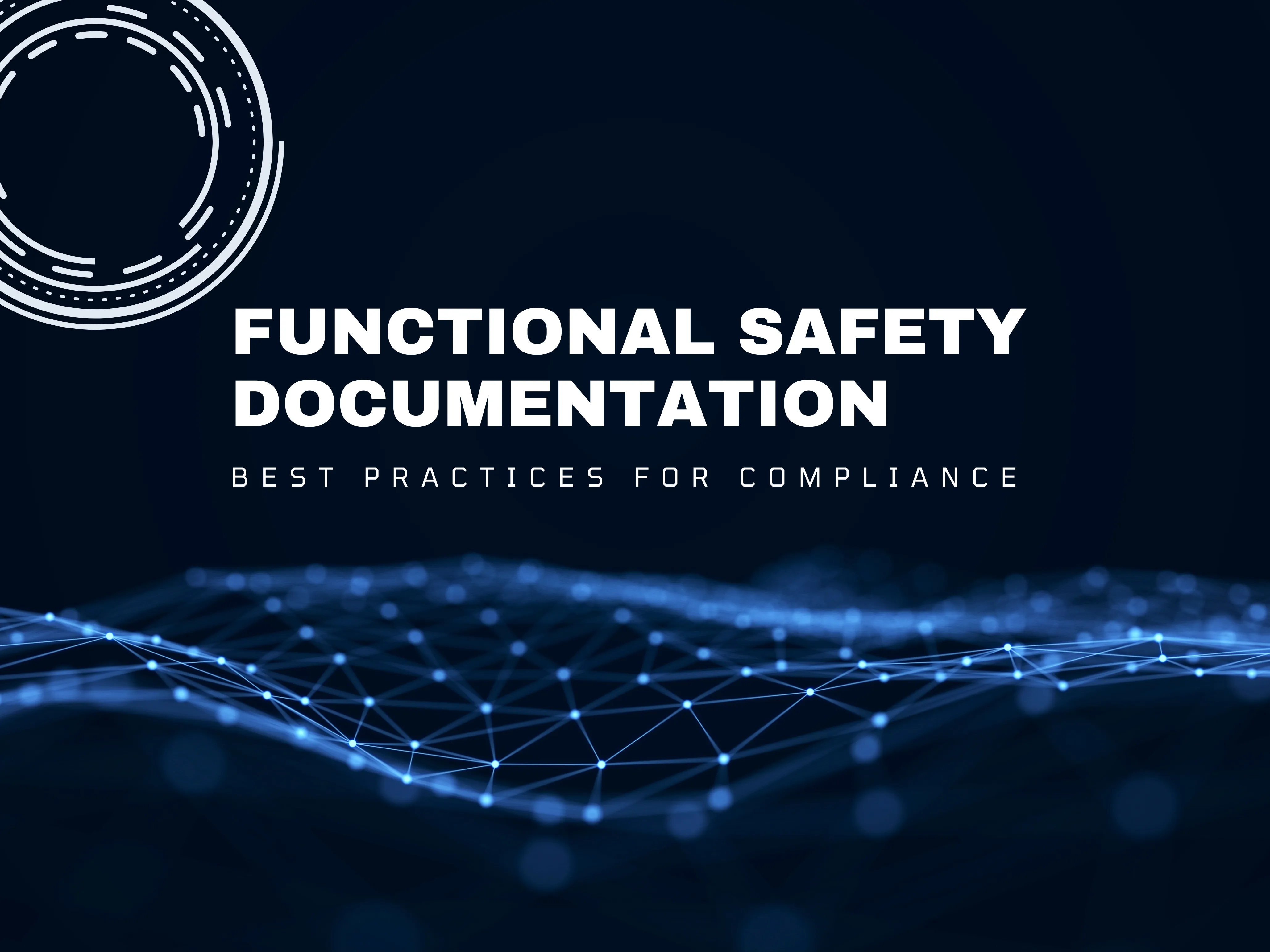In industries where safety is paramount—such as manufacturing, automotive, oil and gas, and chemical processing—ensuring that systems operate safely and reliably is a top priority. Functional safety plays a crucial role in preventing accidents and protecting lives by controlling risks through safety-related functions.
One of the cornerstones of achieving functional safety is proper documentation, serving as a record of safety assessments, design processes, and safety measures.
This article explores best practices for creating, managing, and maintaining functional safety documentation to ensure compliance with safety standards and regulations.
Why Functional Safety Documentation Matters
Functional safety documentation serves multiple purposes:
Ensuring compliance: Adherence to IEC 61508, ISO 13849, ISO 26262.
Risk management: Assess risks, track mitigations, reduce hazards.
Audits and inspections: Provide evidence of safety compliance.
Accountability and traceability: Establish decision history across the safety lifecycle.
Best Practices for Functional Safety Documentation
Establish Safety Management Practices
IEC 61508-1 Section 6 emphasizes building a safety management foundation before analysis and design:
Build a Safety-Oriented Culture: A strong safety culture is the backbone of a successful functional safety program. This means:
1. Leadership consistently prioritizes safety over schedule or cost
2. Team members feel empowered to raise safety concerns
3. Safety is integrated into daily discussions, not treated as an afterthought
4. Decisions that affect safety are documented and traceable
Define Clear Roles and Responsibilities
1. Document which roles are accountable for each part of the safety lifecycle (e.g., design, verification, validation, assessment)
2. Appoint a Functional Safety Manager (FSM) or equivalent to oversee the entire process
3. Identify independent reviewers or assessors with adequate separation from development teams
4. Ensure each role understands their responsibilities, especially when safety integrity levels (SIL) are involved
Set Up Document Control and Version Management
1. Use a version control system for safety-related documents (e.g., Git, SharePoint with audit trails, or dedicated requirements tools like Polarion or CodeBeamer)
2. Create a naming and revision standard for documents
3. Define a clear approval and review workflow for safety-critical records
4. Ensure documentation supports requirement traceability, from high-level safety goals down to software or hardware implementation
Adopt Supporting Standards and Procedures
1. Have documented quality and safety procedures
2. Use structured development processes (e.g., V model, waterfall, or agile with safety gates)
3. Track training and competency for all personnel involved in safety-related tasks
Make sure your quality management system (QMS) supports:
1. Change control and impact analysis
2. Audit logging and record retention
3. Review cycles for updates to safety-related items
Document System Definition
Define the system thoroughly to establish context for safety functions:
Equipment under control (EUC)
Environment and interfaces
System boundaries
Modes of operation (startup, shutdown, maintenance)
Assumptions and limitations
This definition must be maintained as a controlled document to align all stakeholders.
Document Functional Safety of System
Hazard and Risk Analysis (HARA):
Identify hazards.
Assess risk levels.
Define safety goals.
Document findings.
Key elements:
Risk assessments: Probability, severity, mitigations.
Safety functions: List of required safety functions.
Safety objectives: Measurable reliability, availability, performance targets.
Ensure Proper Documentation of Safety Analysis
Includes:
Hazard identification (HAZID): Comprehensive hazard list.
Fault Tree Analysis (FTA)
Failure Modes and Effects Analysis (FMEA)
Mitigation measures: Documented risk reduction steps.
Safety validation: Proof of validation through tests or simulations.
Ensure Traceability
V&V activities ensure compliance through testing and analysis:
Test plans and reports: Test details and safety validations.
Validation criteria: Performance and safety benchmarks.
Failure analysis: Record of test failures and corrective actions.
Maintain Documents
Functional safety is ongoing:
Maintenance schedules: Regular safety checks.
Incident reporting: Document incidents, near misses, corrective actions.
Performance monitoring: Track system reliability over time.
Ensure Traceability and Audit Readiness
Key practices:
Audit trails: Maintain clear records of assessments and approvals.
Cross-referencing: Link risk assessments, tests, specifications.
Clear referencing: Cite relevant standards, guidelines, regulations.
How to Document Functional Safety
Basic Documentation (Small Projects)
Word documents / spreadsheets for:
HARA - Document identified risks and mitigation strategies.
SRS - Define safety functions and integrity levels.
Verification & Validation plans - Outline test procedures and expected results.
Change Management Logs – Track modifications to safety-critical components.
Structured Documentation (Medium to Large Projects)
Wikis (Confluence, Notion) – Centralized documentation for team-wide access.
Version Control (Git, SVN) - Manages design changes in safety-critical software.
Traceability Matrices - Maps safety requirements to test cases and design elements.
Advanced Documentation (Enterprise & Regulatory Compliance)
Requirements Management (IBM DOORS, Jama Connect) - Tracks safety requirements across the system lifecycle.
Safety Case Tools (Ansys Medini, Isograph) - Documents compliance with functional safety standards.
Test Management (TestRail, Jira Xray)- Ensures traceability between safety tests and requirements.
Considerations
Choose tools based on project complexity - Simple spreadsheets may be fine for small systems, while large projects need structured databases.
Ensure traceability of requirements - Functional safety standards often require proof that each requirement has been verified.
Regularly update safety documentation to reflect changes - Regularly review and update safety records to reflect system changes.
Conclusion
Achieving functional safety compliance requires meticulous documentation throughout the system lifecycle. By following these best practices—clear standards, comprehensive plans, traceability—organizations can meet regulatory demands, minimize risks, and protect lives and assets.
As standards evolve, maintaining robust, up-to-date documentation remains essential for compliance and long-term safety.
